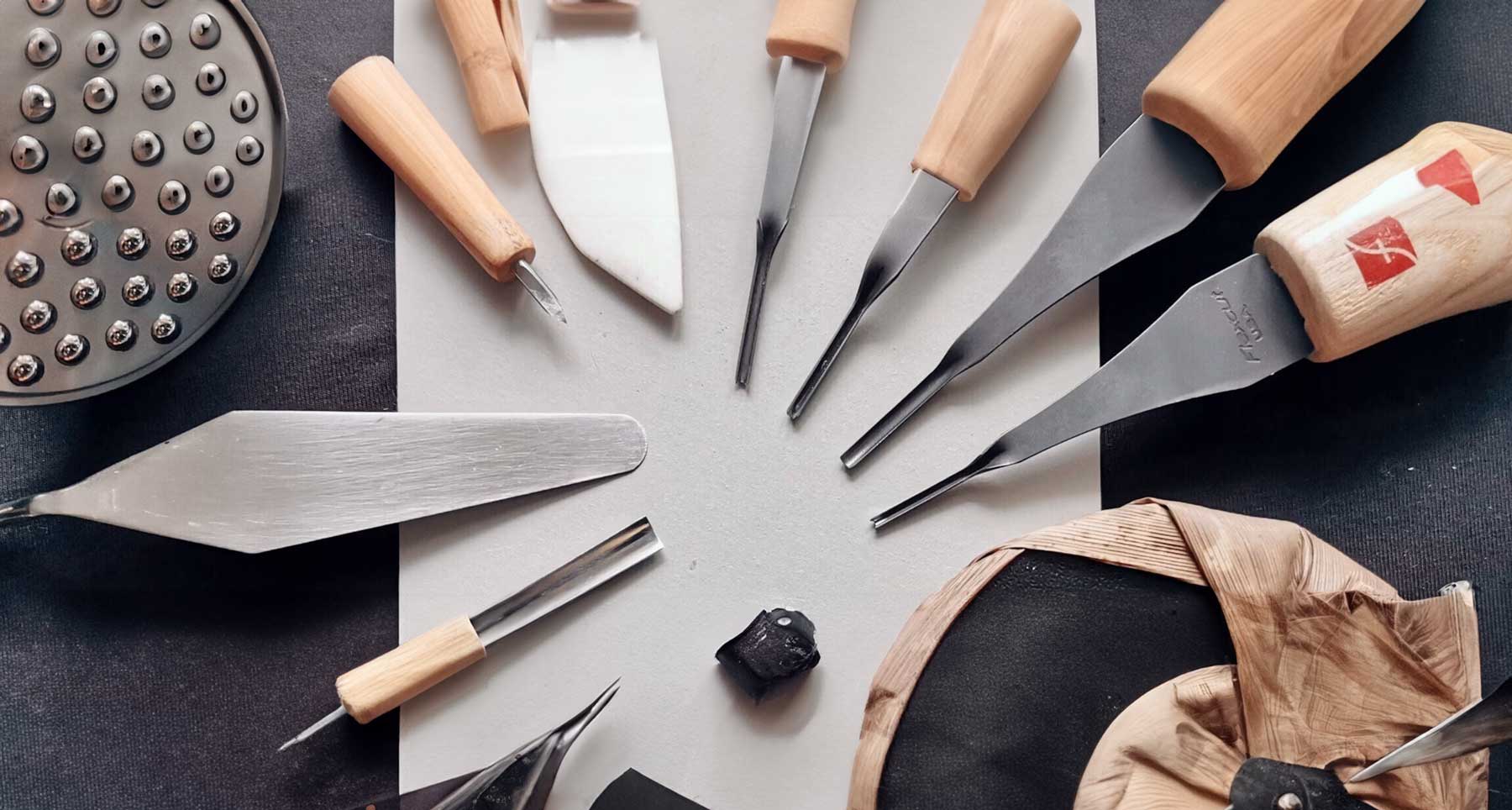
Pavel Illustrations: Linocut and ink

Winter Sale 10% Discount
Artist | Pavel Illustrations
Behind the pseudonym "Pavel Illustrations" is the talented artist Paul Fleischer, who lives in the picturesque city of Jena and directs his creative energy into the world of drawing with ink and linocut. His artistic expression is characterized by a deep inspiration that he draws from the fascinating Far Eastern culture, way of life and philosophy, with Japanese woodcuts in particular playing a central role.
The subtle balance between delicacy and expressiveness in the Japanese woodcuts exerts an irresistible fascination on Fleischer and significantly influences his own artistic design. In his works, this admiration manifests itself in masterfully designed lines and the clever use of contrasts. The attention to detail in his prints is a testament to Fleischer's mastery of craftsmanship and gives his work a distinctive aesthetic.
Each work by Pavel Illustrations tells a unique story and takes the viewer on a fascinating journey through Fleischer's artistic universe. Every line and every nuance in his works contributes to creating a powerful narrative that captivates the viewer.
To delve deeper into the fascinating world of Pavel Illustrations, you can visit his Instagram account. The artist regularly shares new images and works there, which not only provide an insight into his artistic development, but also offer the opportunity to follow his current creative phases.
For art lovers interested in experiencing and owning Fleischer's works, the artlia online gallery offers an excellent platform. Here his unique artworks can be discovered and purchased, giving art enthusiasts the opportunity to integrate a part of Pavel Illustrations' creative world into their own spaces.
His original artwork | Instagram

The art of linocut and linoprint: A look into the world of printmaking

Linocut and linoprint are fascinating art forms that attract the attention of artists and art lovers through their unique techniques and creative possibilities. In this article, we will explore the fundamentals of these printing techniques and provide insight into the materials, tools, and artistic processes that make these art forms so special.
What is linocut?
Linocut is an artistic printing technique in which a relief image is cut on a linoleum panel. Artists use special tools to manipulate the linoleum and create raised pieces that accept ink. After the raised areas are scored or cut, the linoleum panel is colored with ink and then printed onto paper or another substrate. This technique allows the creation of repeatable, multi-colored prints.
What is linocut printing?
Linocut printing refers to the actual printing process, which is based on a previously prepared linocut. After the linoleum sheet is cut and colored, it is pressed onto paper, fabric, or other surface to transfer the image. This artisanal process enables the creation of works of art with a characteristic line and structural pattern. Linocut printing is a popular technique in printmaking and is used by artists around the world for creative expression.
Materials for linocut:
Linocut requires basic materials such as linoleum sheets, carving tools, paints and high-quality printing paper. The quality of these materials is crucial to the final result and expression of the art.
Tools for linocut:
Special tools such as linoleum cutters, V-shaped carving knives and groove cutters are central to the precise design of the linoleum board. Each tool contributes to the intricacy and complexity of the artwork.
Differences from other printing techniques:
Compared to other printing techniques, linocut is characterized by its simplicity and versatility, making it a preferred choice for artists who prefer a direct, hands-on approach.
Role of linoleum board:
The choice of linoleum plate not only affects the durability but also the texture of the print. Softer plates allow for finer details, while harder plates work well for broad lines.
Multicolored prints:
Linocut is particularly suitable for multicolor prints because artists can create different panels for each color. This results in vibrant and complex works of art created through layering and overlaying.
Error correction in the editing process:
Errors in the editing process can be integrated into the artwork through clever corrections, overlays or even as creative elements. The flexibility of linocut allows artists to turn challenges into creative opportunities.
Challenges in the printing process:
Challenges in the printing process can range from ink transfer issues to consistency difficulties. These obstacles provide scope for experimental approaches and unique results.
Artistic effects through cutting techniques:
Different cutting techniques allow artists to create a variety of effects such as shading, patterns and textures. These elements give the artwork depth and expressiveness.
Color selection in linocut printing:
The targeted selection and combination of colors significantly influences the end result of lino printing. Artists can thus specifically create moods and atmospheres.
Texture of linoleum board:
The natural texture of linoleum can be deliberately used to create interesting visual effects in print, from subtle structures to striking patterns.
Overall, linocut and linoprinting offer a rich range of creative possibilities that inspire artists to develop their unique artistic vision. Immerse yourself in this fascinating world of printmaking and discover the beauty that comes from cut, color and creativity.


























